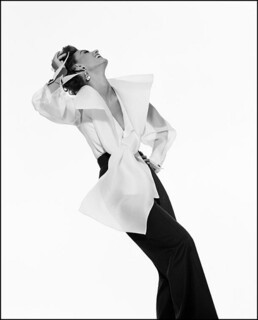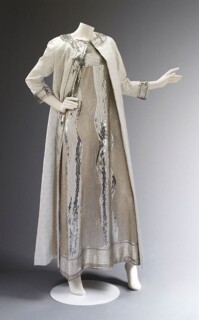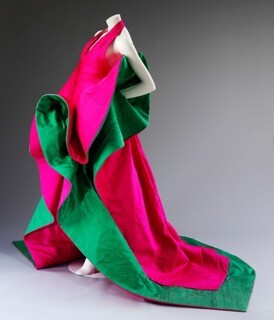At the V&A
Inigo Thomas
The broad daylight at the southern end of the Mont Blanc Tunnel always seemed brighter than the light we'd left behind, but when you're seven it's easier to magnify minor differences. In 1970, and for some years that followed, the differences between France and Italy, as I saw them from a car window – there were so many of them. Both countries had motorways named for the sun – the Autoroute du Soleil, the Autostrada del Sole – but one took you to the Mediterranean, the other took you from one part of the Mediterranean to another. In France, the border police stared at you as if you were about to do something wrong; in Italy, they waved you through: 'Avanti, avanti.'
Italian roads were different (the tunnels, the viaducts); and the cars (some smaller, others faster); the food at the service stations or just off motorways where the truck drivers ate was really good. Where we were headed, to a farmhouse owned by Italian cousins, that was different, too: it had recently abandoned by a pig farmer after an outbreak of swine fever. There was no phone, the water came from a spring, and the farm manager from Rome often diverted it to troughs for the wild horses. The house had a view over the valley where Hannibal's last elephant died. The Medici were from the valley, so was Giotto. A meteorite once set the hillside alight, someone once saw a golden pheasant in the forest, a Pole who had fought in the last cavalry charge of the 20th century lived in the house that had once been Amerigo Vespucci's. 'We're very far away,' said a friend of my parents who'd come to stay.
There were the clothes. The Italian cousins, who always seemed to arrive in the middle of the night, didn't dress like the grown-ups in London. Their way with informality made northern Europeans look like they'd put either too much or too little thought into it. Sprezzatura is a concept Castiglione wrote about in The Book of the Courtier, and it's still talked about by Italian fashion types today. Studied informality is what it means, the appearance of doing things without effort, as if you haven't thought about it.
The dresses, suits, jewellery, bags and everything else that make up The Glamour of Italian Fashion 1945-2014 at the V&A are less about sprezzatura than about a shift away from that studied informality to overt and unapologetic display: from clothes that didn't say everything about the person wearing them to clothes that can have more to say than the people in them. In 1945, Italian fashion was artisanal, tailored, local and centred, if it was centred anywhere, on Florence; half-a-century later and it was corporate, off-the-peg, international, and based in Milan. The shimmering, sequinned gown worn by Lee Radziwill at Capote's Black and White Ball in 1966 (above) is restraint itself when compared to Roberto Capuccio's ball gown of 1987 (below), which, like the white blouse designed by Gianfranco Ferre that's on the cover of the catalogue (top), looks like a controlled explosion.
The exhibition opens into a ballroom of a kind: handmade gowns once worn by famous people hang from a dozen or so mannequins housed in large glass cases. The final room, in contrast, is a catwalk; there's no glass, the gestures of the mannequins are more animated. In between there are side shows; a section on men's fashion, another on knitwear, a somewhat disappointing and small section on suits.
Formality prevails; the clothes on display are mostly for going out at night. There's much less on the quotidian stuff that made walking through Rome and Florence interesting from the clothes point of view. And for all the show's eventfulness, the dressing up for the big occasion, there's a static almost event-less feel about it. No room to mention the apotheosis of Giorgio Armani at the 1990 Oscars, for example; a surprising number of award winners that night wore Armani. After that, what someone was 'in' at the Oscars no longer just meant the film in which they'd appeared. Dana Thomas in Deluxe: How Luxury Lost Its Lustre explains that there's no mystery about this; Armani's people went about Hollywood wrangling the actors and actresses to wear his clothes. Martin Scorsese made a film about Armani the same year. Sales went through the roof.
'We're weavers and grocers,' says the bored and lascivious toy-maker at a roof-top party in one of the opening scenes of The Great Beauty. 'All we make is fashion and pizza.' That really isn't so. Italians make trains, cars, planes, agricultural equipment, and exports of industrial goods are significantly larger than exports of clothes. Italy remains a great maker of things. That said, the V&A catalogue, which is edited by the show's curator, Sonnet Stanfill, raises a question about three words that are as important to Italian fashion as Pucci, Gucci, Missoni, Versace, Armani, Albini, Valentino, Cavalli, Dolce & Gabbana and all the rest put together. Those words are 'Made in Italy'. Actually, there's a fourth word and that's 'China'.
'Italy remains Europe's largest producer of clothing and textiles,' Stanfill writes, but what does 'Made in Italy' really mean? Made from Italian materials by Italians in Italy, or can the equation be manipulated so as to include designed and assembled in Italy from raw materials from elsewhere? Valentino is now owned by a Middle Eastern company, Pucci by a massive French firm – does that make them less Italian? Chinese companies have swept into Italy, especially to Prato, a textile town just west of Florence. Of the 4000 companies producing textiles, 3400 are now Chinese-owned and run, and employ Chinese workers who sew 'Made in Italy' labels into the million garments they make every day.
'The Chinese business activity is concentrated in specific areas of Prato,' Catherine Rossi writes in the catalogue, 'creating a a town within a town. It is a system that is not integrated with the Italian one, and which is supplied by textiles made in China at a very low cost, due to the lower quality and price of raw materials, as well as lower import taxes.' It's serious stuff; sales of textiles made in Prato have fallen by 50 per cent in the last decade; half the textile makers have closed; many people are out of work.
'We were walking on Via Condotti, in Rome, my wife and I, when we saw her coming toward us – the glamorous international movie star, wearing a shiny lavender blouse, suede pants and long boots, and sporting a man on each arm,' Don DeLillo once wrote in the New Yorker, describing an encounter in the late 1970s. I've never seen a movie star on an Italian street, but on an Italian street a movie star wouldn't necessarily stand out.


